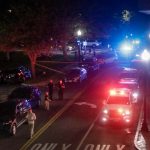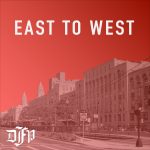Minority enrollment in the city’s three elite exam schools is rising, according to a Boston school report released last week.
The report is encouraging to the school board, which hopes to diversify the schools’ student bodies and make them commensurate with the city’s racial makeup.
The report cited a 2 percent increase in Latino students (from 10 percent to 12), while there was no drop-off in the number of black students. Blacks make up 27 percent of students in the three exam schools.
The three schools — Boston Latin School, Boston Latin Academy and the John D. O’Bryant School of Math and Science — are regarded as the most prestigious of Boston’s public schools, with the former two focusing on the classical languages. All three institutions teach grades seven to 12.
This is the third year in which race was ruled out as a criterion for acceptance into exam schools. In addition, Boston Public Schools hopes to continue the trend with programs including “Best We Can Be.”
“The overall goal of the “Best We Can Be” program is really to increase the number of public school students who are applying to the three exam schools,” said Karen Richardson, the director of Exam School Initiative. “Based on the fact that our school system is 85 percent black and Latino students, we definitely hope to see an increase in those two groups of students as they are underrepresented in the exam schools but higher-represented in the school system.
“These schools offer a rigorous, college prep curriculum for students. They do have a high rate of students who go on to four-year colleges, so they are definitely schools that students are looking to get into.”
The “Best We Can Be” begins targeting potential exam school students entering fifth grade. At this time, the board evaluates students’ Stanford 9 Achievement Test scores, teacher recommendations for those with poor standardized test scores, enrollment in after-school programs during the school year and participation in “summer programming that would help to enhance math and English language arts skills,” Richardson said.
“It’s really an 18-month curriculum that students are invited to,” she added. “I’m hoping that we will see an increase in the number of students who apply … and we’d like to see the number of public school students [who take the test and apply] increase as well.”
Richardson said the percentage of public school applicants has dropped in recent years. She said she did not know the cause of the fall in the number of public school student applicants.
“We have to make sure that information about the exam schools is out there,” Richardson said. “We want to make sure that families and students know that they actually have to register for the test and they have to know what school they want to go to and about the schools as well.”
This is an account occasionally used by the Daily Free Press editors to post archived posts from previous iterations of the site or otherwise for special circumstance publications. See authorship info on the byline at the top of the page.



